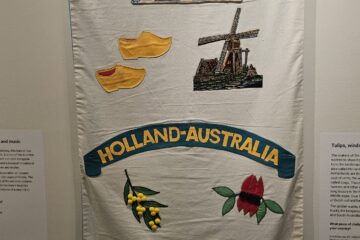This story start with some family history of Jan de Wit written by one his daughters.
What follows now is a collection of archives kept by Jan (John) de Wit. Jan joined the Dutch Airforce and became a guard at the Dutch Camp in Casino NSW. After Jan passed away this collection of archives was made available to Dr Jurriaan Beek, who was Jan’s family GP.
Jurriaan has made Jan’s archival collection available to the DACC In the interest of documenting the history of Dutch activities in Casino during the 1940’s,
To put Jan’s story in context there will also be a short history of Victory Camp Casino and further information on the Black Armada (Australian boycott of Dutch shipping) that Jan also covers).
Very fortunately the archives include an overview of Jan’s involvement in Camp Victory Casino written by his wife Gloria. She also mentions dates this is important as the many newspaper articles below don’t have dates. But the events mentioned in the articles nearly all relate to the dates of the information from Gloria. Here it is in her words.
I want to tell you about my husband, Johannes Adrianus de Wit, born 21 June 1924 in Dussen, NB. Holland and his connection with Victory camp Casino, Australia.
Victory Camp Casino. Turn right, passed the meatworks. And then?
John and I got married on 14 June 1948 and for the record we had 11 beautiful children. We lost John in 1999 after a long illness.
I have never been in this camp. Us Casino girls wouldn’t dream of going there for any reason. You would be talked about in town. Therefore, I cannot tell you anything about it except that I know that there was a “klink” where John spent some time because he came back to camp late or went out without a leave pass. John refers to it as the “petout”.
John kept a sort of Diary, he called it “Aantekeningen vanaf 7 December 1944” It covers the period 7-12-44 till 14-6-48, our wedding day. Apart from his line entries there are lots of paper cuttings, some of which I will refer to as I am rationed to about 800 words. As my Dutch is very limited, I have called on one of John’s friends to help me in putting this story together.
John joined the resistance on 11 Dec ’44 in Tilburg. He applied to be an Airforce OVW’er (war volunteer) on 25 April ’45, was no 3605. He reported to the depot in Eindhoven on 14 May ’45 and was transported to Blankenberg in Belgium, sailed to London then on to Wolverhampton, Wrottesley Park and then on 18 June ’45 to Glascow where he, together with another 192 men embarked on the Orontes which sailed to Australia via the Suez Canal. Seasick for three days!
This ship reached Sydney on 23 July from where the troop was transported to Darly Camp in Bacchus Marsh to be moved on to Escot Vale on 13 Aug ’45 for training…By the way, and this information does not come from John’s Diary, the Casino boys came in 4 ships, the Rangitata, 61, Arundel Castle, 83, Orontes, 193, Sterling Castle, 319. Not all these boys went to Casino.
On 8 Sept ’45, together with 27 others, he left Escot Vale for Casino where they arrived two days later on 10 Sept. Here John met “Overste” Breemhouwer while walking along the Kyogle Road rather late at night well outside the time limit for being back in camp. John thumbed a lift from the oncoming car and this is how the two met. He (Breemhouwer) took him straight to the klink where he spent 8 days. It was on 23 Sept ’45 that Snepvangers drowned in the Richmond River. He was buried with military honours the next day in Casino Cemetery.
It was on 18 Oct ’45 that 392 Javanese members of the KNIL were put behind barbed wire and housed in American Army tents. All this time I didn’t know John. We met in June ’46 so I am only able to tell you all these things because of John’s Diary.
The shooting of one of the prisoners happened on 17 April ’46. The Communists had a field day. Some headlines of the Newspaper cuttings: Inquiry held into Camp shooting, Communist resents charges, Richmond River Express readers state their viewpoint, Pelted and hosed by Dutch troupes on the wharf at Woolloomooloo, Dutch ships in bay: Coal from South, 3 Dutch ships break waterside blockade, etc.
The hanging of one of the prisoners, a Soendanese named Emod happened on 11 Sept ’46. The paper cutting reads: “Enod’s body was found swinging from the pole of an open lecture tent in the middle of the lines of the compound”.
Sgt Batenburg was told by his informant and one of the posted guards that there had been a slight disturbance at the camp at 3.00 am”. John writes: 9 Sept ’46, One of the prisoners with knife wounds transported to hospital. 11 Sept ’46: The attacker hung by his mates. The 12 camp leaders removed from the compound and locked up elsewhere. After all this, and as written in his Diary by John: 12 Sept ’46: One of the Javanese shot dead and two wounded during the removal of one of the prisoners from the compound. And on the same day John did his driving test and got his driving licence.
In the meantime, on 16 July ’46 Kees van Esch was killed by the propeller of a small plane at Casino Airport and laid to rest with Military Honours at the Casino Cemetery the next day. Also, on 25 August ’46 41 of the boys left for Holland for their Airforce training for which they had joined in the first place.
As a local girl I can say that the attitude of the Casino people to the Dutch presence in town was reasonable. When the Dutch boys started to arrive mid ’45 friendships were soon formed. After all, most of the Aussie boys had enlisted including my own brothers. The businesspeople were pleased to get the business from the camp generally and the cafes, picture theatres and lots of other shops benefited financially. Some people were anti and some parents forbade their daughters to associate with the boys but they were in the minority. They certainly gave us a good time on the dance floor and knew how to treat a girl.
The local lads would always hang out together near the exit and when the band started to play the foxtrot or whatever rush over to ask you for the dance. Unfortunately for them, the Dutch boys stayed with you and beat the locals every time. Yes, there was some friction between the local boys and the Dutch boys which I believe they took out on one another on the hockey field.
In Oct and Nov ’46 most of the Javanese prisoners were repatriated and John and others were transported to Batavia on the Manoora. On 30 Dec ’46 another group arrived and together they sailed on the Kota Inten for Holland on 4 Jan ’47 arriving in Rotterdam on 1 Feb ’47. John sent me a telegram from Batavia on 19 Dec ’46 telling me that my engagement ring was on its way. We were engaged with me in Casino and John in Batavia on Christmas day ’46.
John was back in Australia on 14 Aug’47. He got his discharge from the Dutch Air force in Australia. He sailed on the “Nieuw Holland” on 9 July ’47, arrived in Batavia on 7 Aug’47 from where he and others flew to Brisbane arriving on 14 Aug’47. His diary records that he bought another engagement ring on 9 Sept 47. Anyway, being a hairdresser, he stared work as such on 23 Sept ’47 and some 12 months later we got married and were together until death did us part for 51 years.
As I said before, I have never been near Victory Camp but I think back with great affection about the boys who came there in 1945 and with particular mention of my dear husband John. Without his Diary which I treasure even if it is written in Dutch, I could not have made my contribution to the history of Victory Camp Casino.
Yours affectionally,
Gloria de Wit. April 2007.
Archive Jan de Wit
After being in the resistance in the Netherlands he applies as a volunteer for the Dutch Airforce. After a training he travels to Australia. After more training he arrives in Casino where he becomes a camp guard. Within weeks he is the prison cel of the camp, it look like for being outside the camp without official permission.
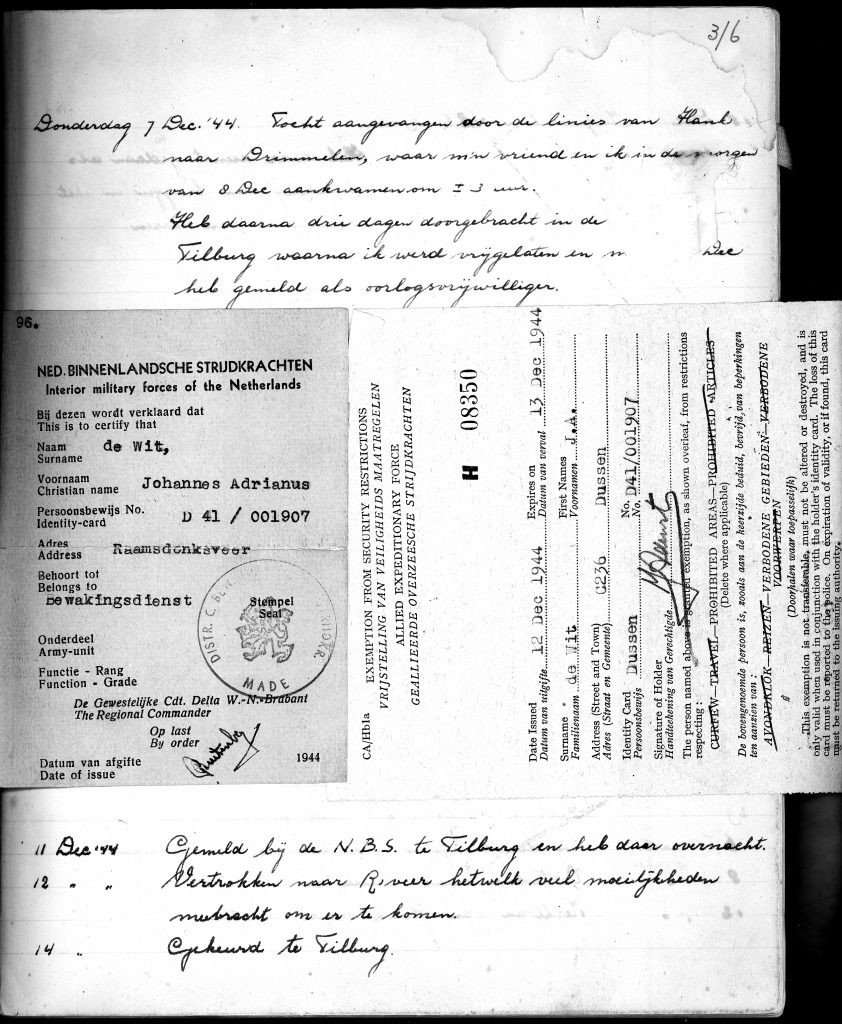
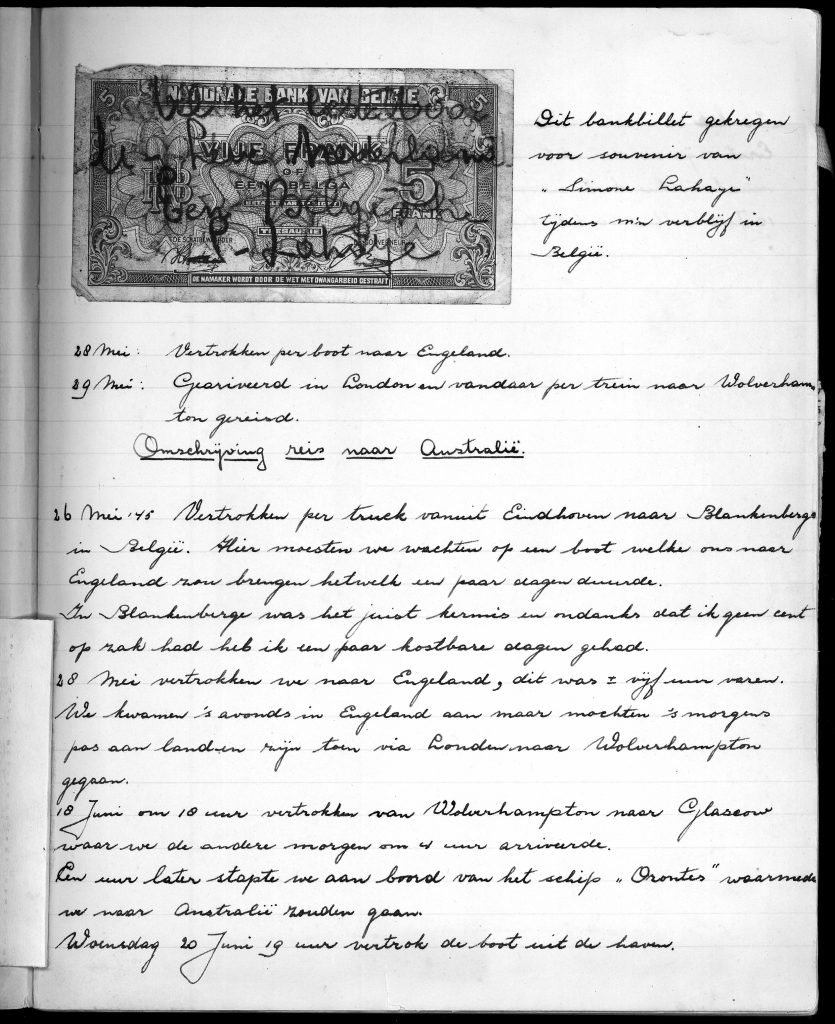
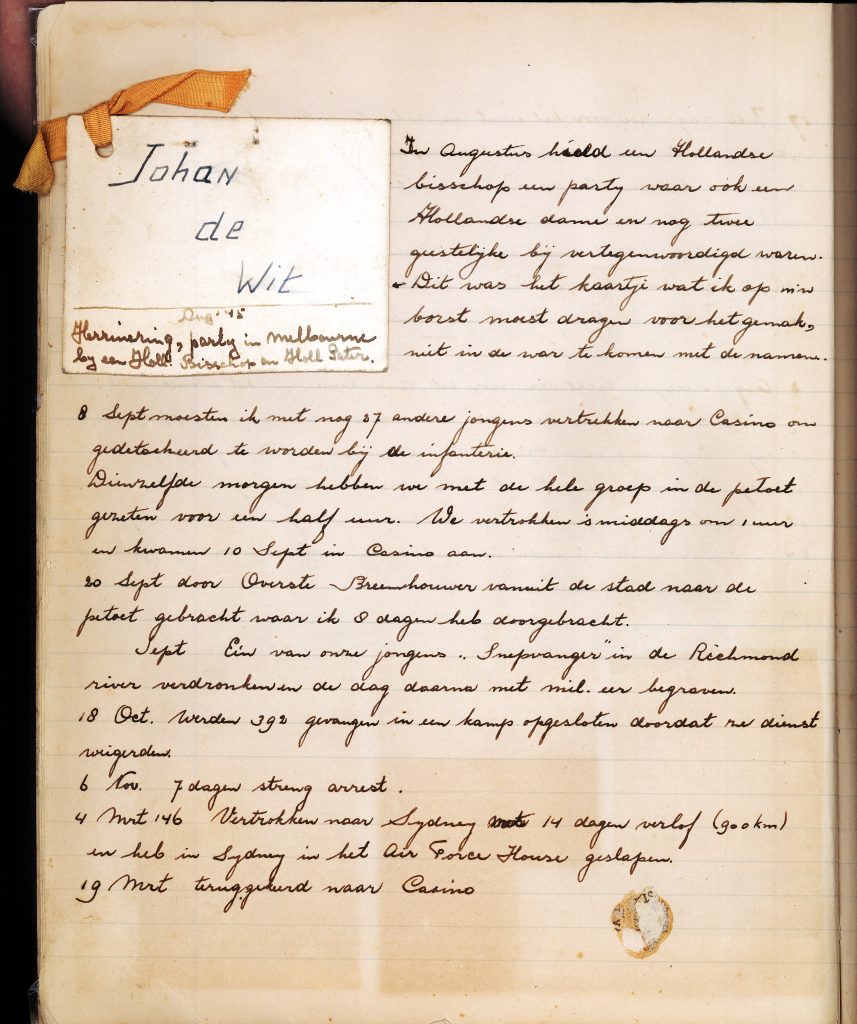
These are some pages from his album and diary during his time in Casino.


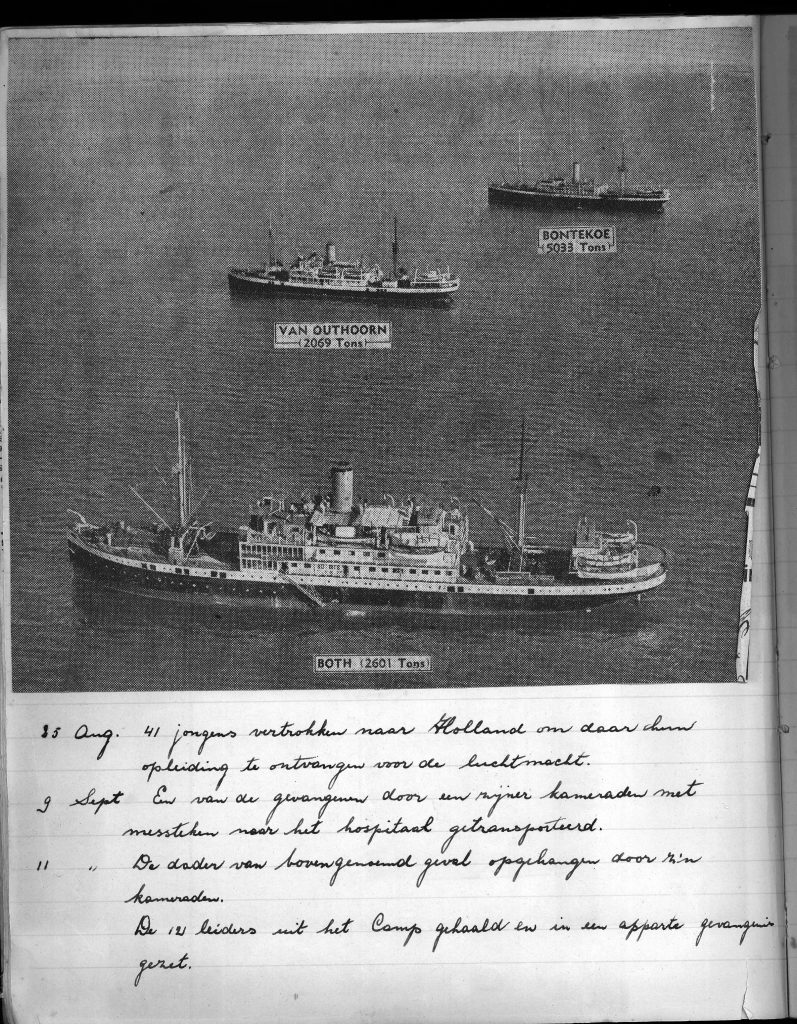
The following are newspaper clipping about events happening in Victory Camp Casino. These events received nationwide attention and were used politically to highlight the way the Dutch treated the Indo staff.
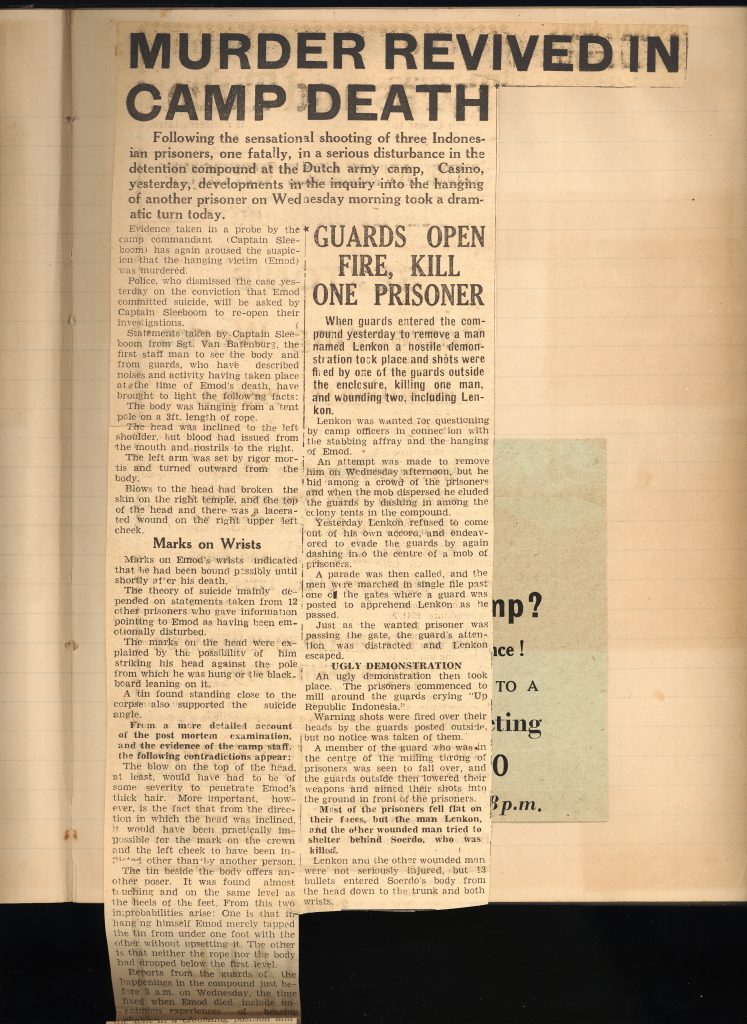
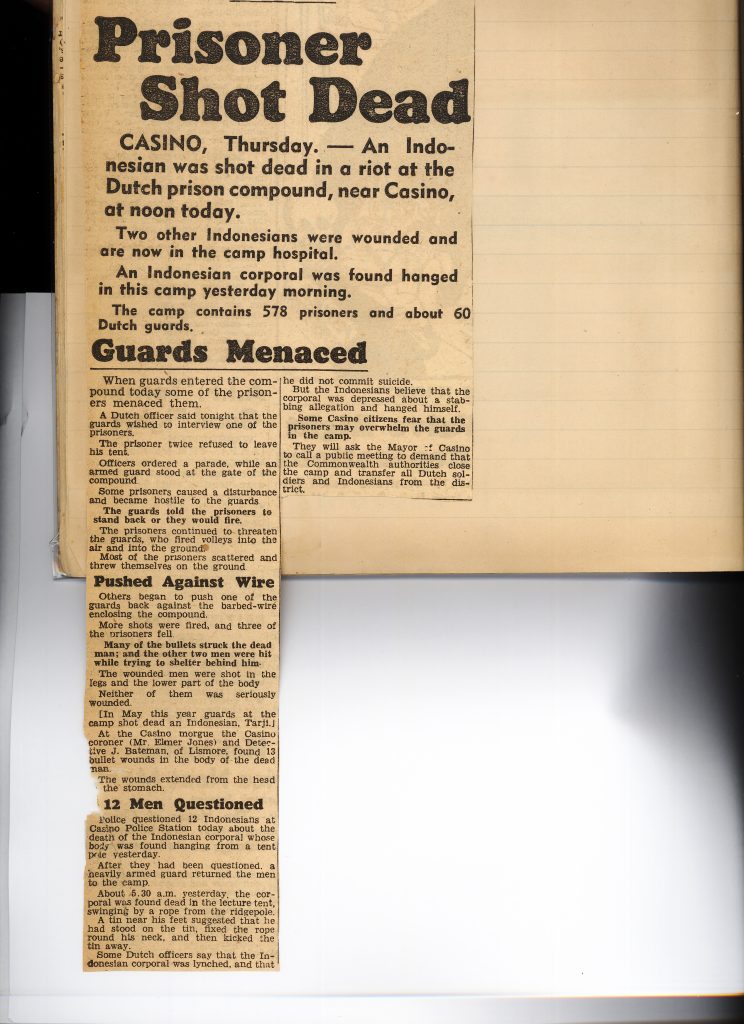
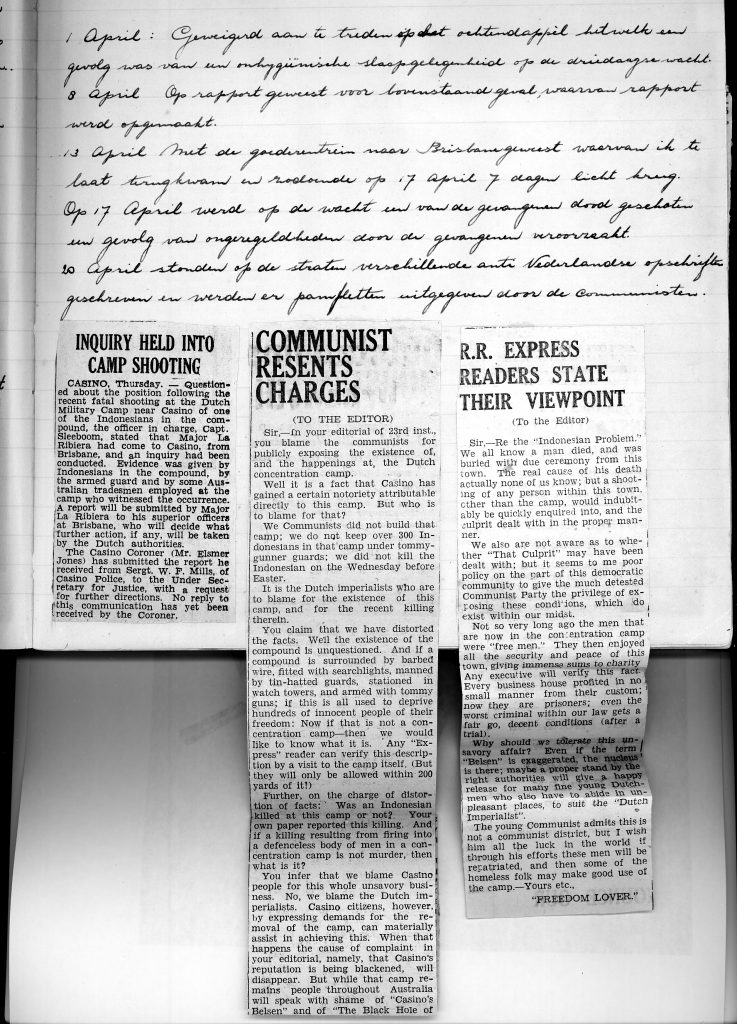

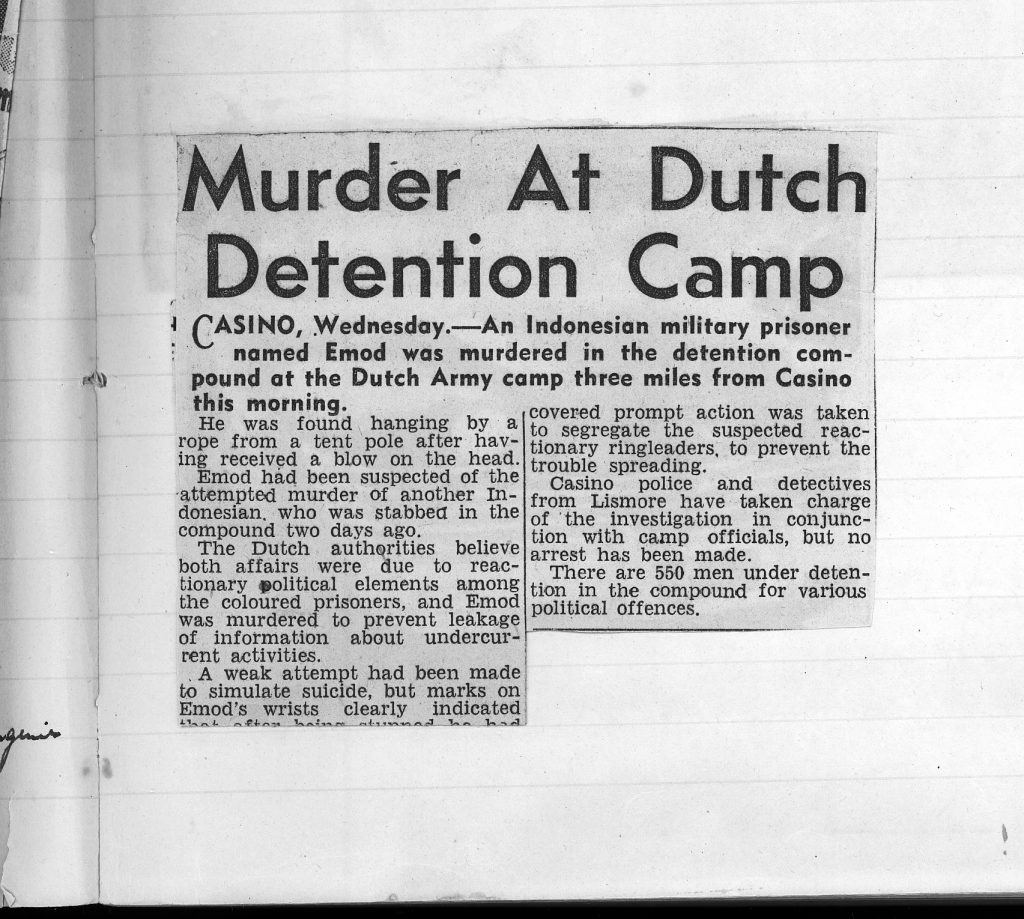
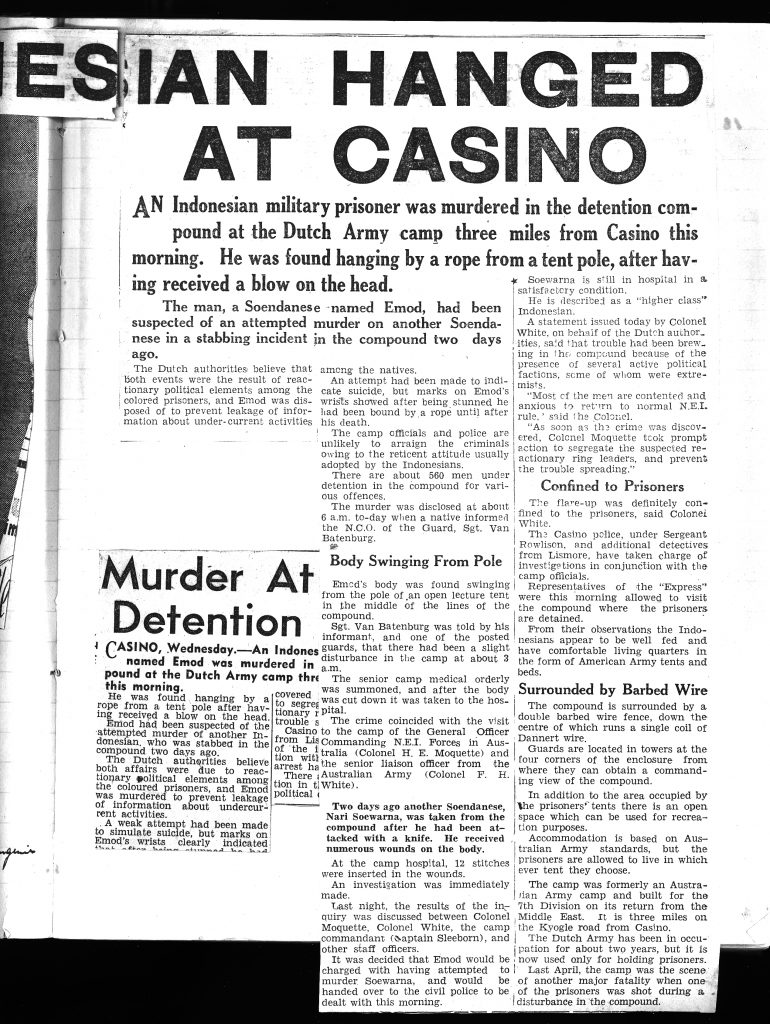
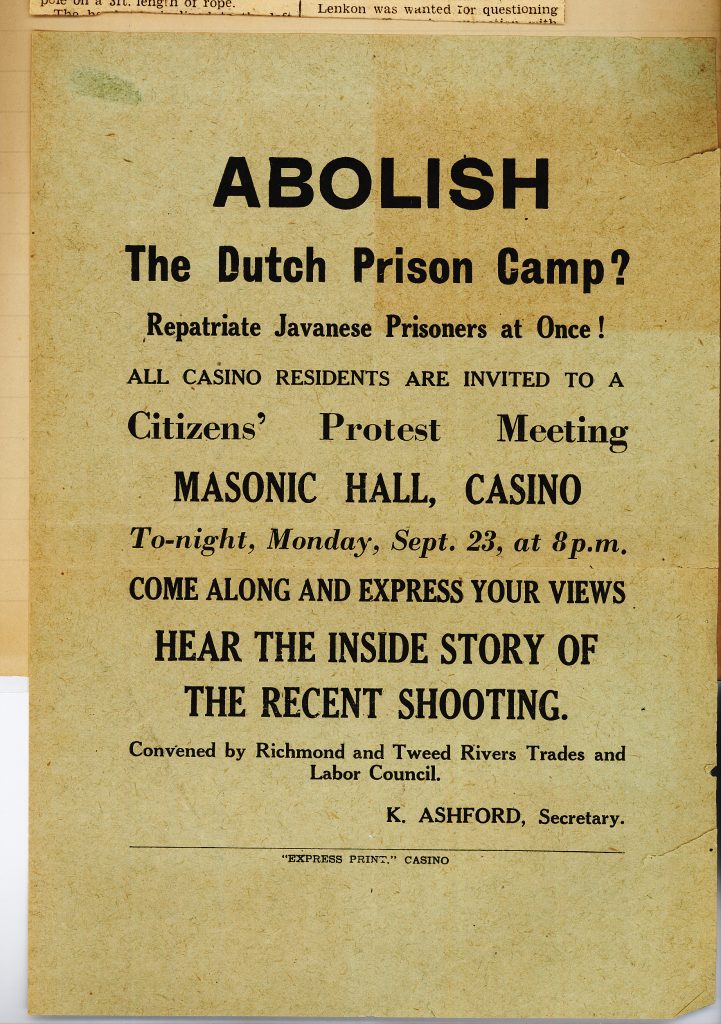
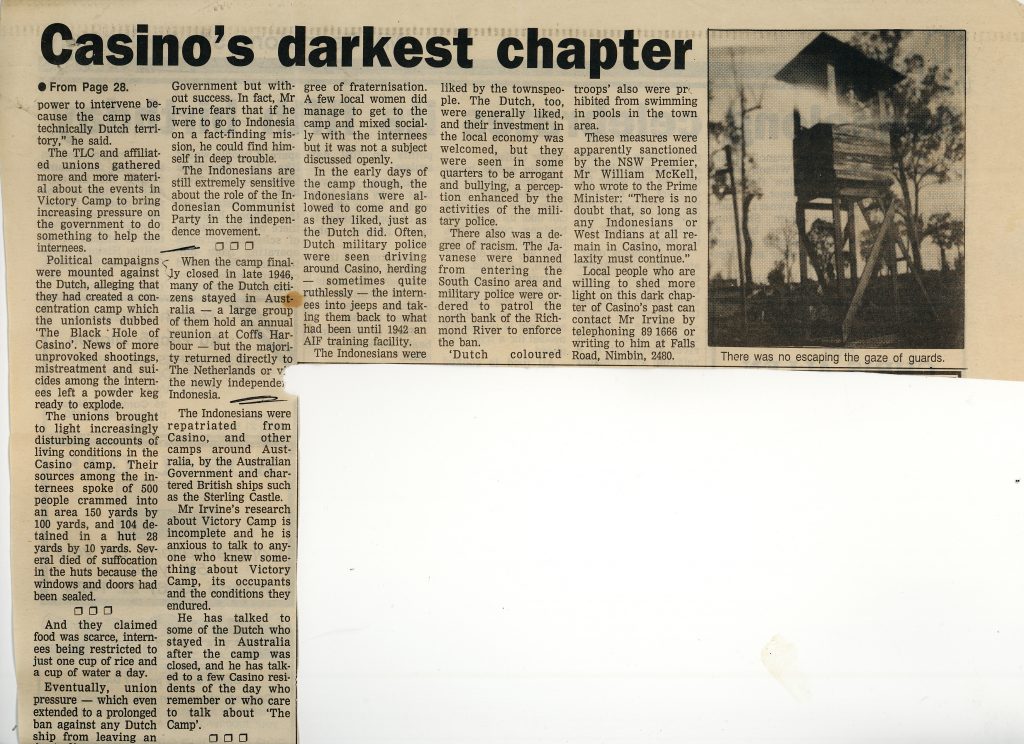
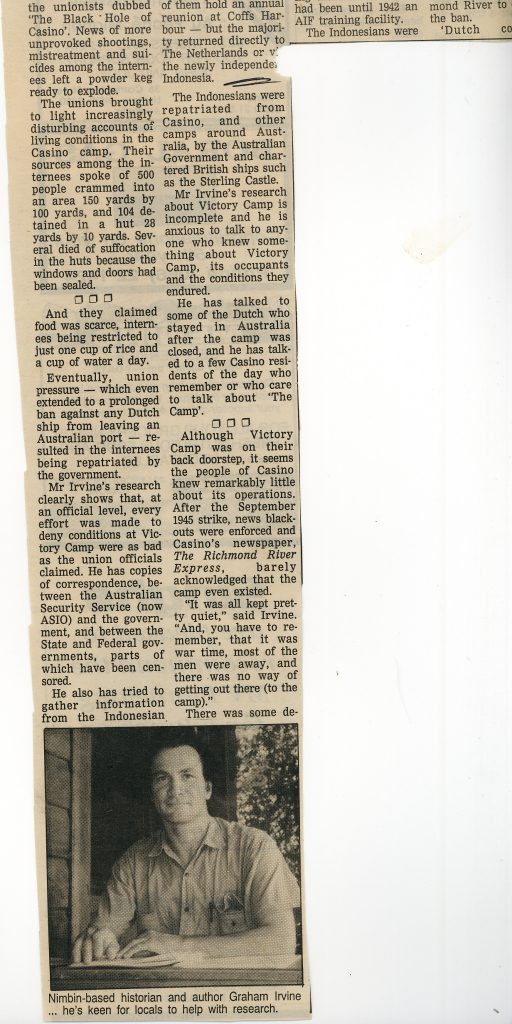
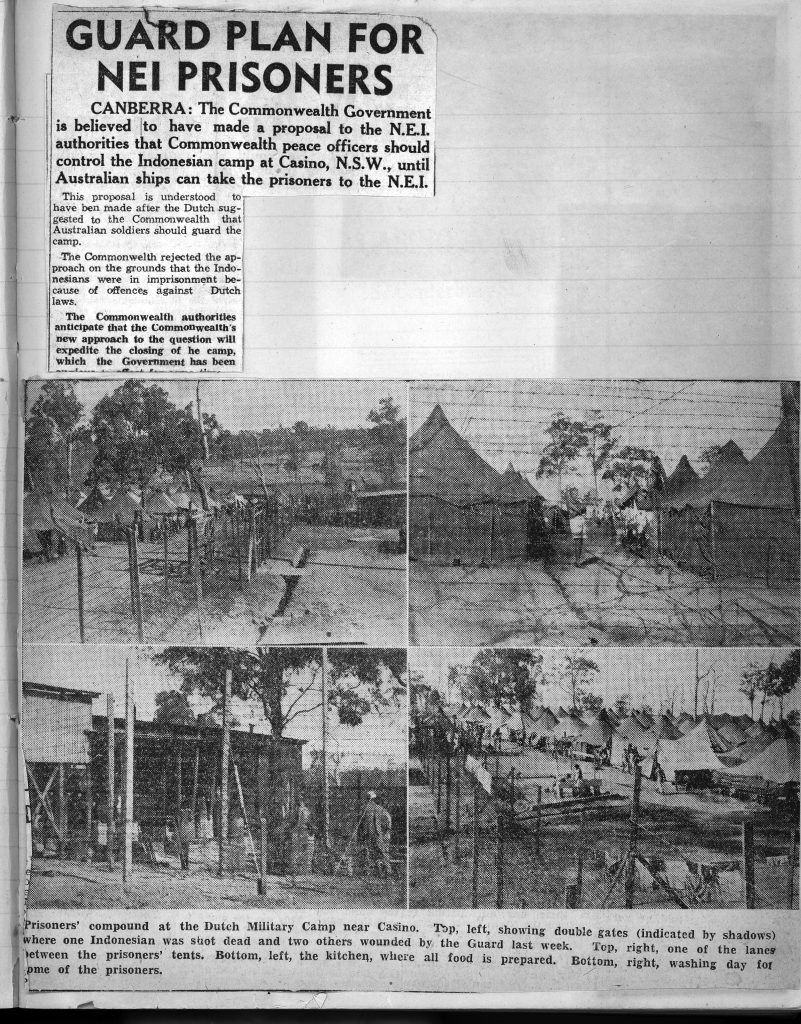

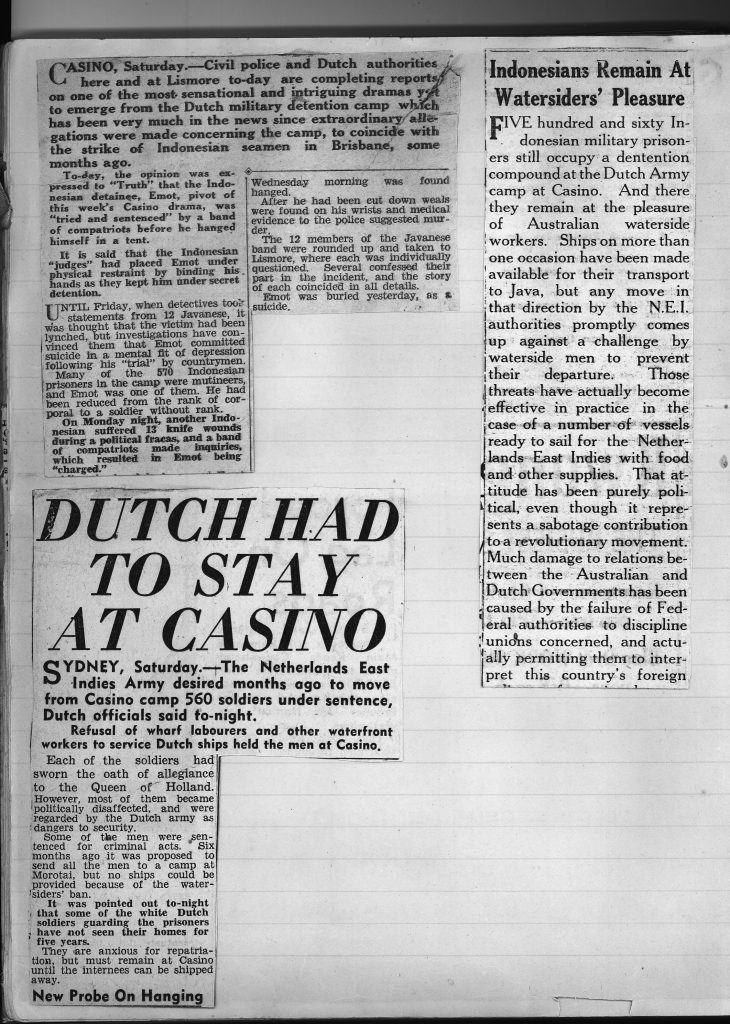
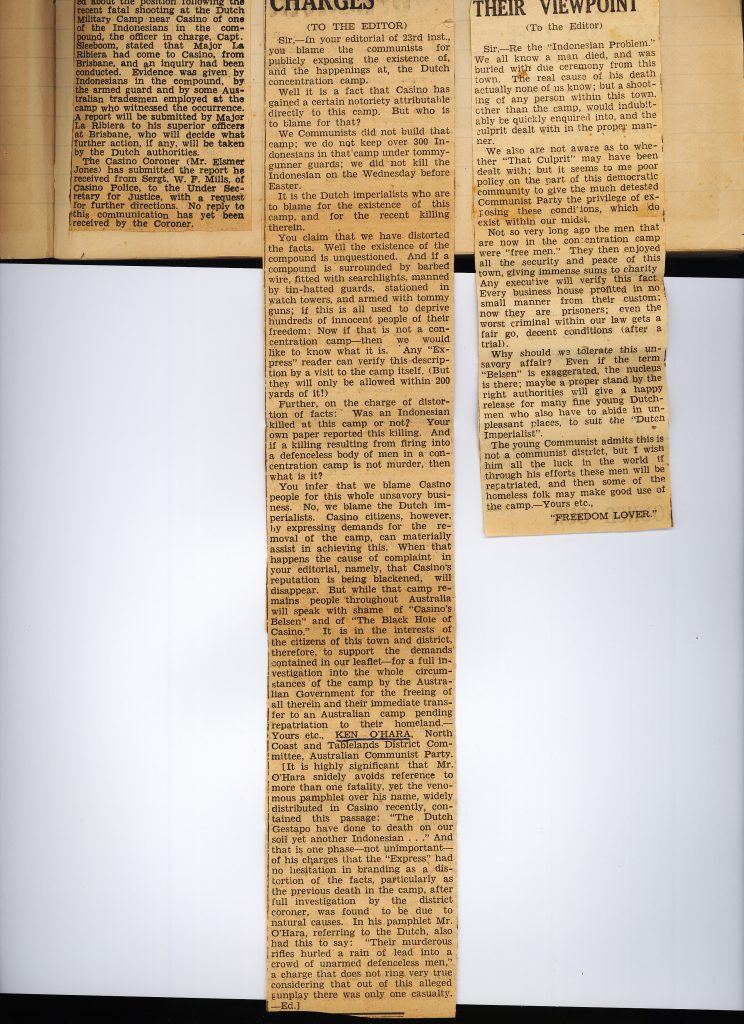
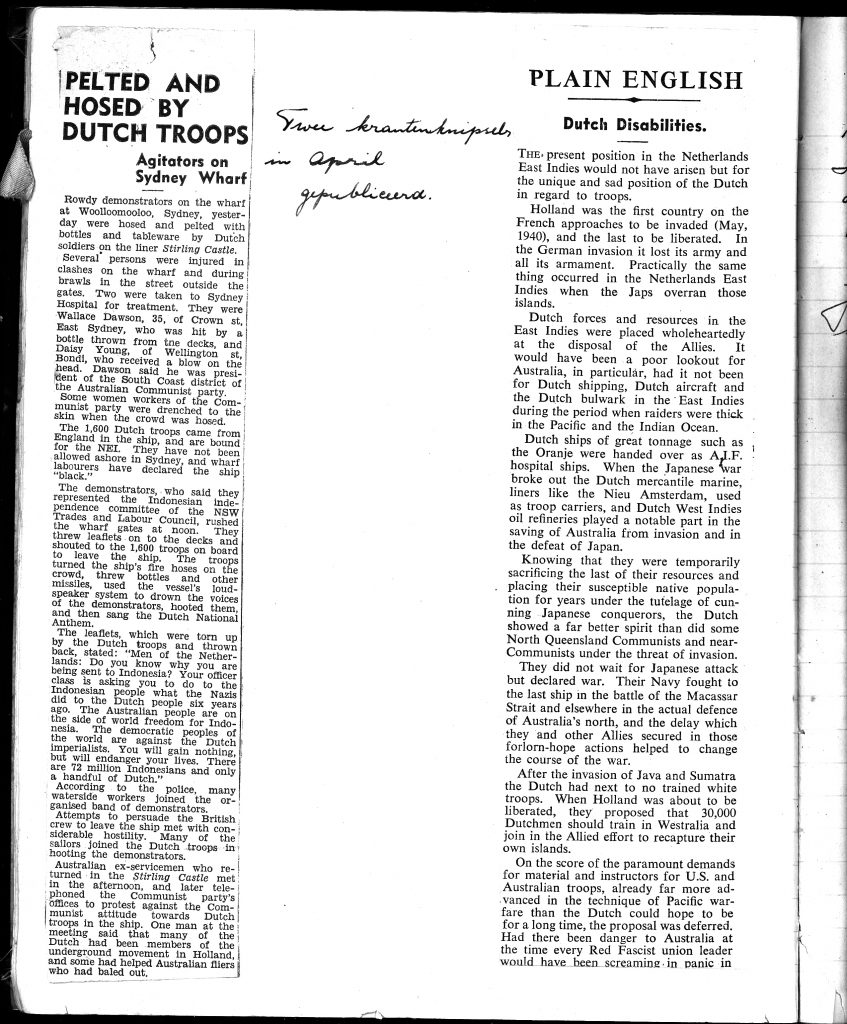
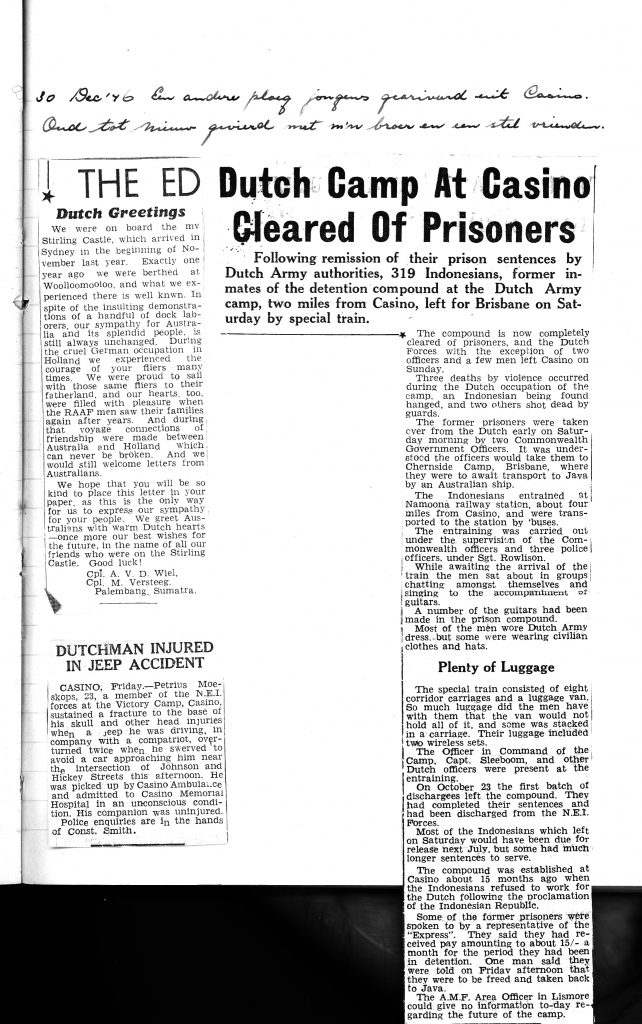
The treatment of the Indo staff and the imprisonment of political prisoners saw the Australian Unions supporting them. When after the war the Dutch wanted to recolonise NEI, while the Indonesian people wanted their freedom led to the third Union action. The boycotted all Dutch shipping – as the logistics of the recolonisation were undertaken from Australia. Known as the Black Armada this became what still is one of the largest maritime boycotts ever. Jan also followed this in the newspapers.
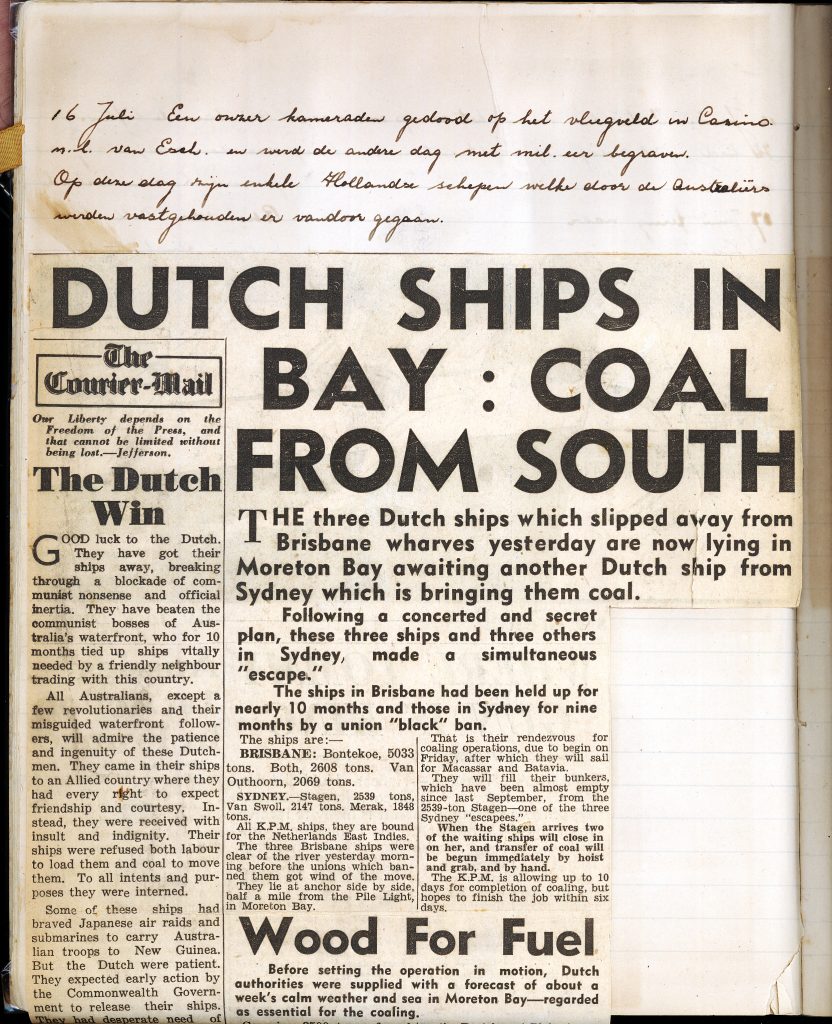
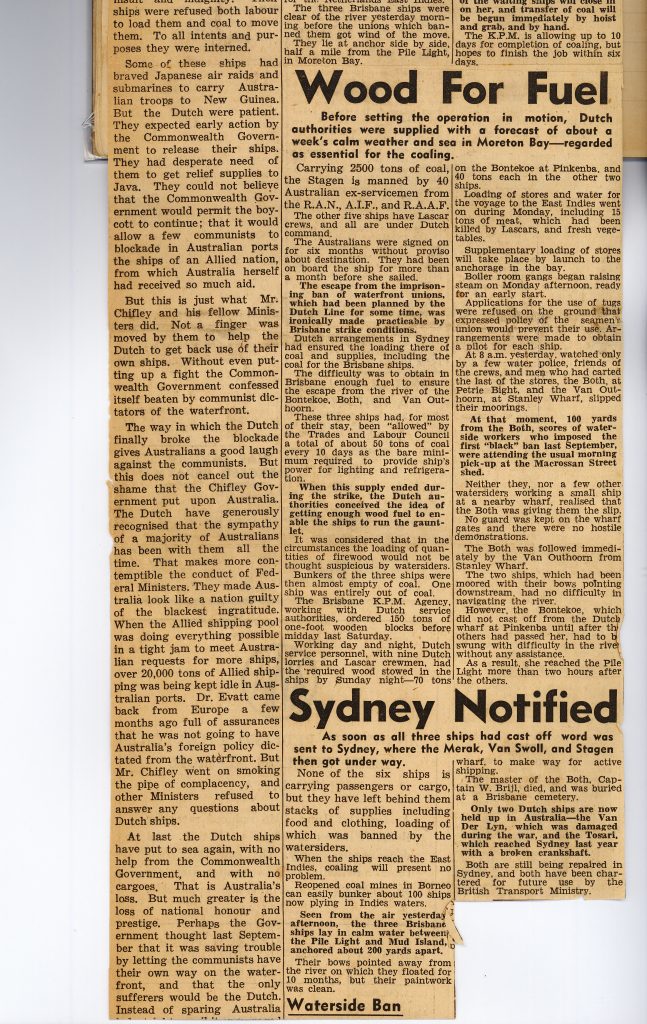

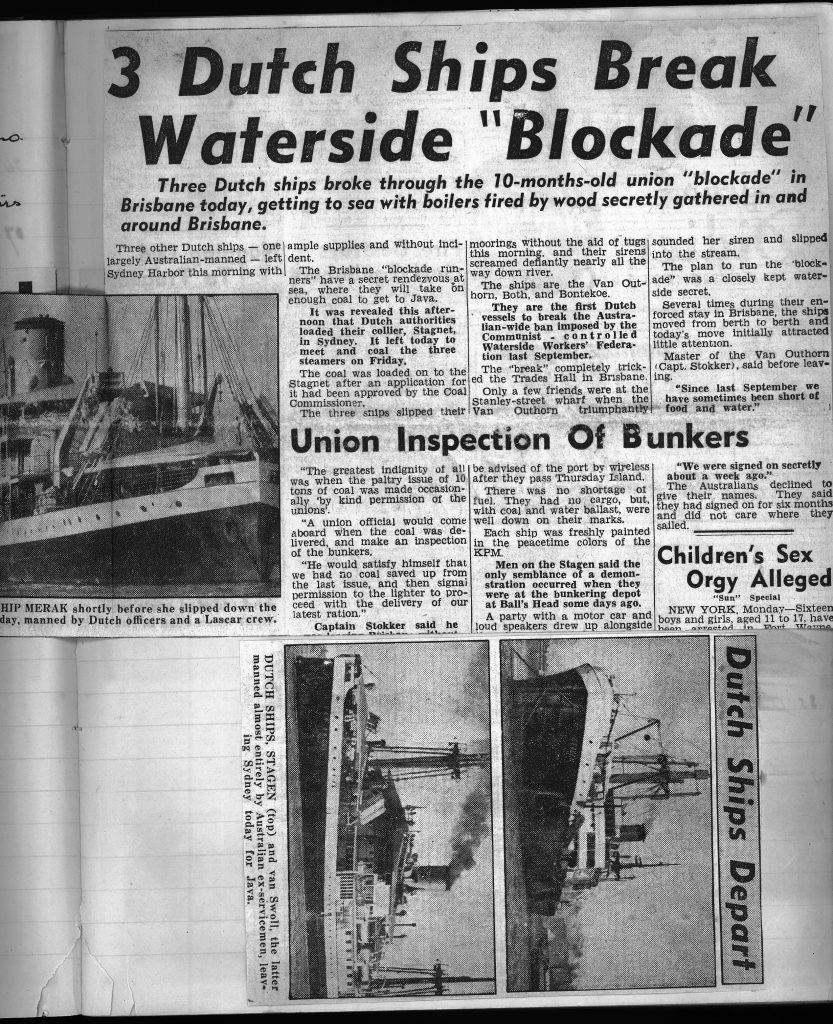
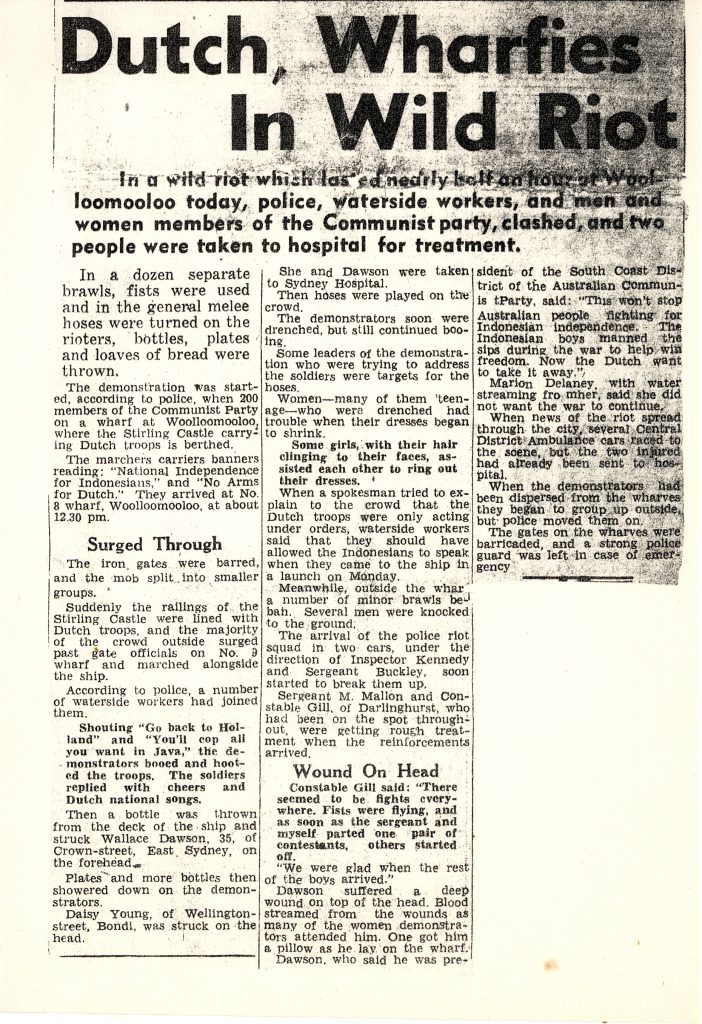
Jan’s trip back to the Netherlands
After Victory Camp was closed the Dutch military staff went back to the Netherlands. A year later Jan was on his way back to Australia (Casino) to marry his sweetheart Gloria.

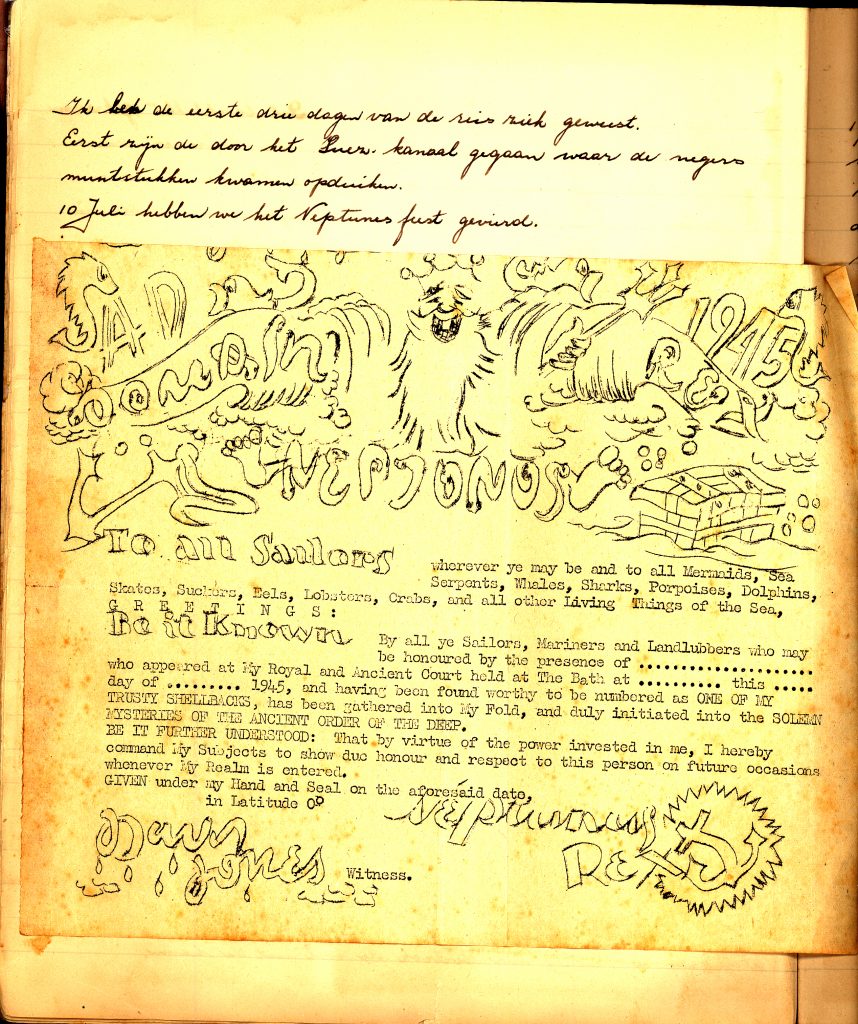
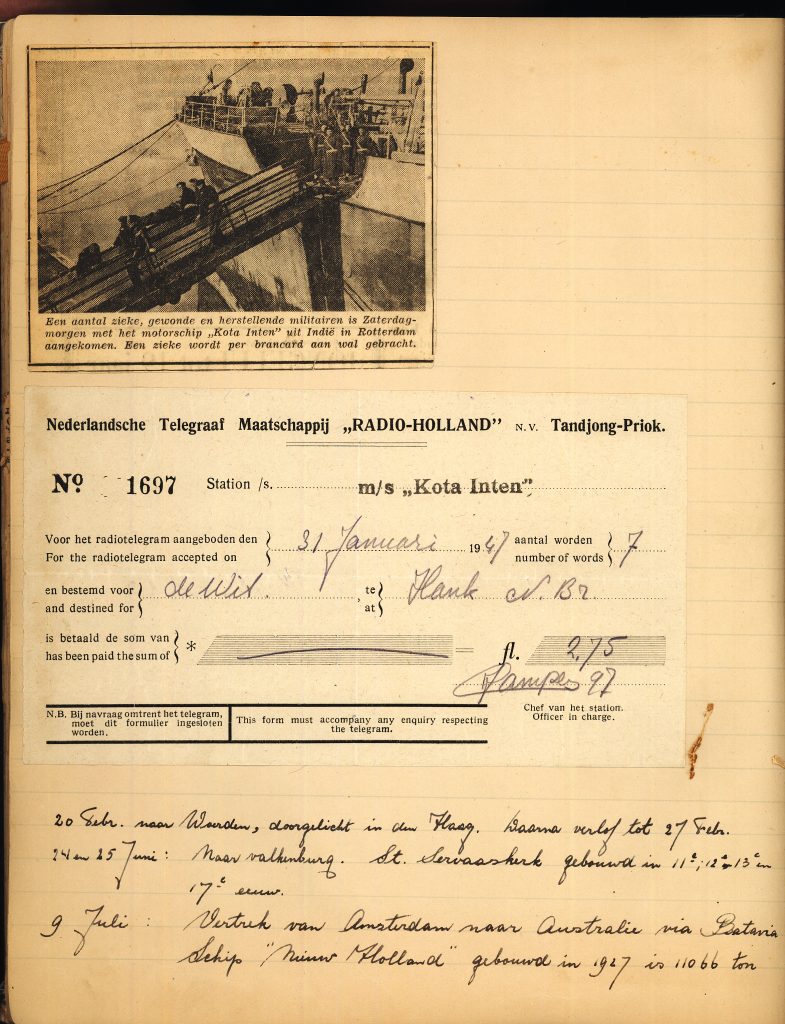
Pictures from Jan’s album. From Hank in the Netherlands and his early days in Australia.

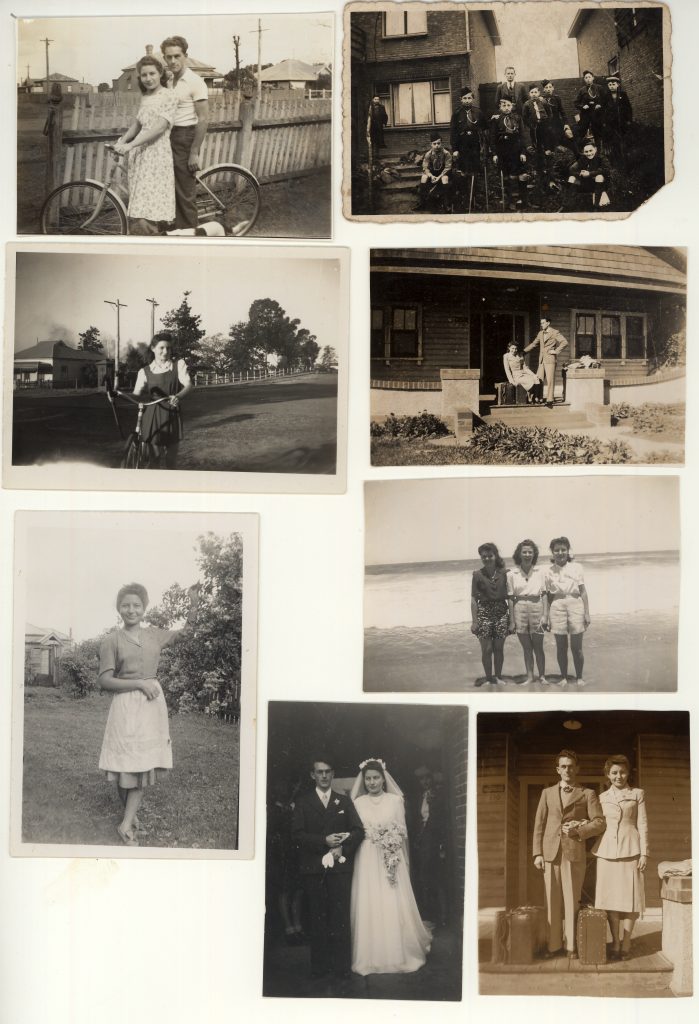
He later compiled a chronological overview, starting as a resistance fighter in the Netherlands in 1944 and ending with his wedding in Casino on 1948.
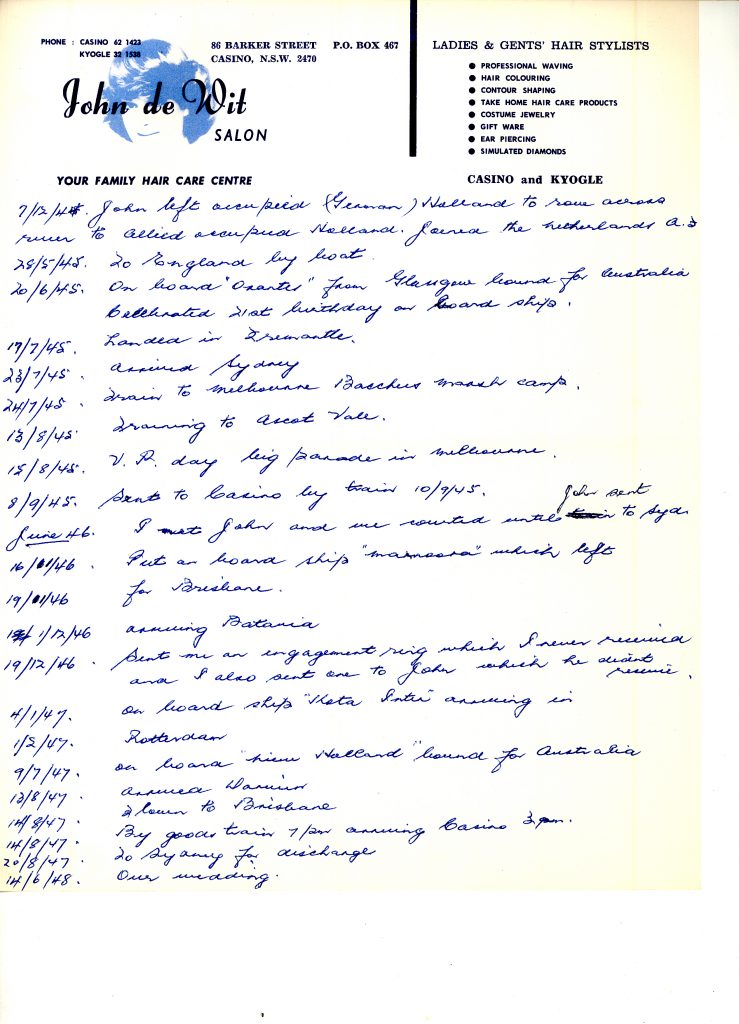
The mayor of Casino conforms a few details of Jan in a Statuary Declaration

Obvious Jan was not very impressed with an article about the Dutch Camp in Casino as het contacted the author to set a few fact straight.
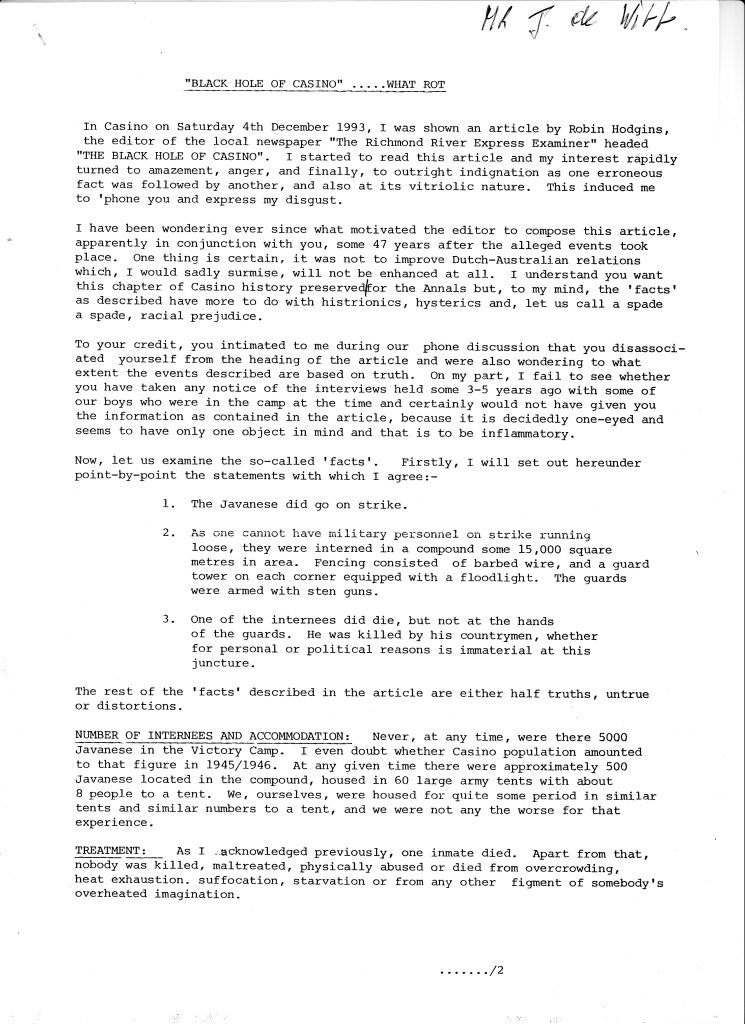
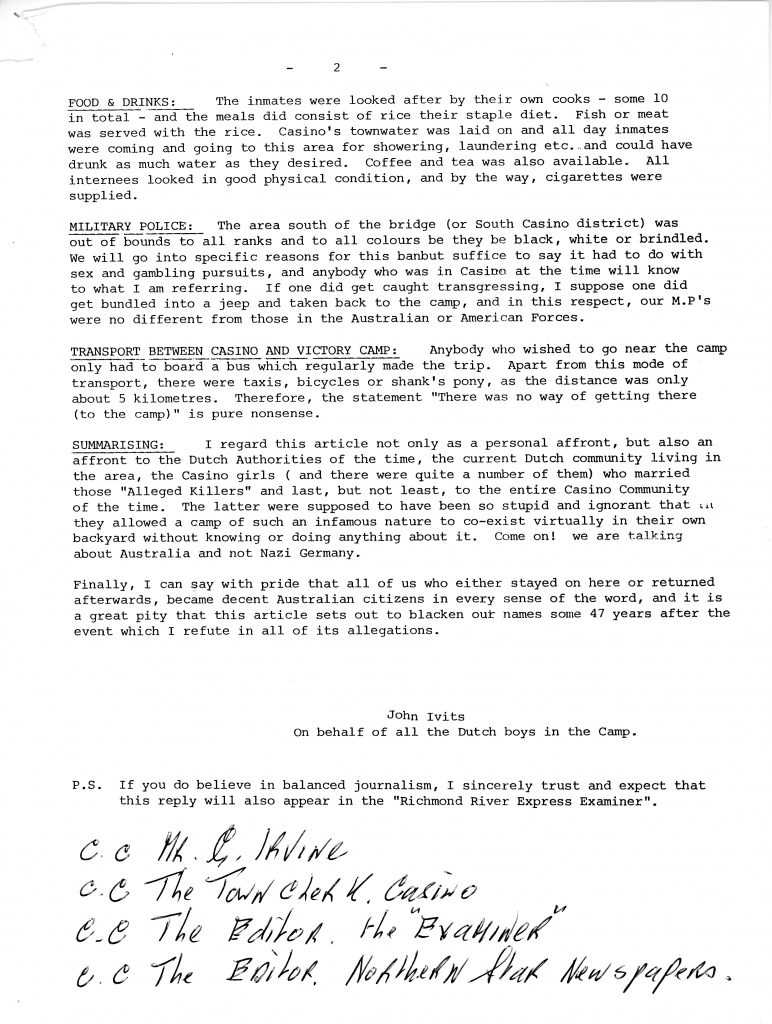
Below is the downloadable book “The Casino Boys’ It has been split in two to make it mare manageable.
See also: WWII Camp Victory Casino


